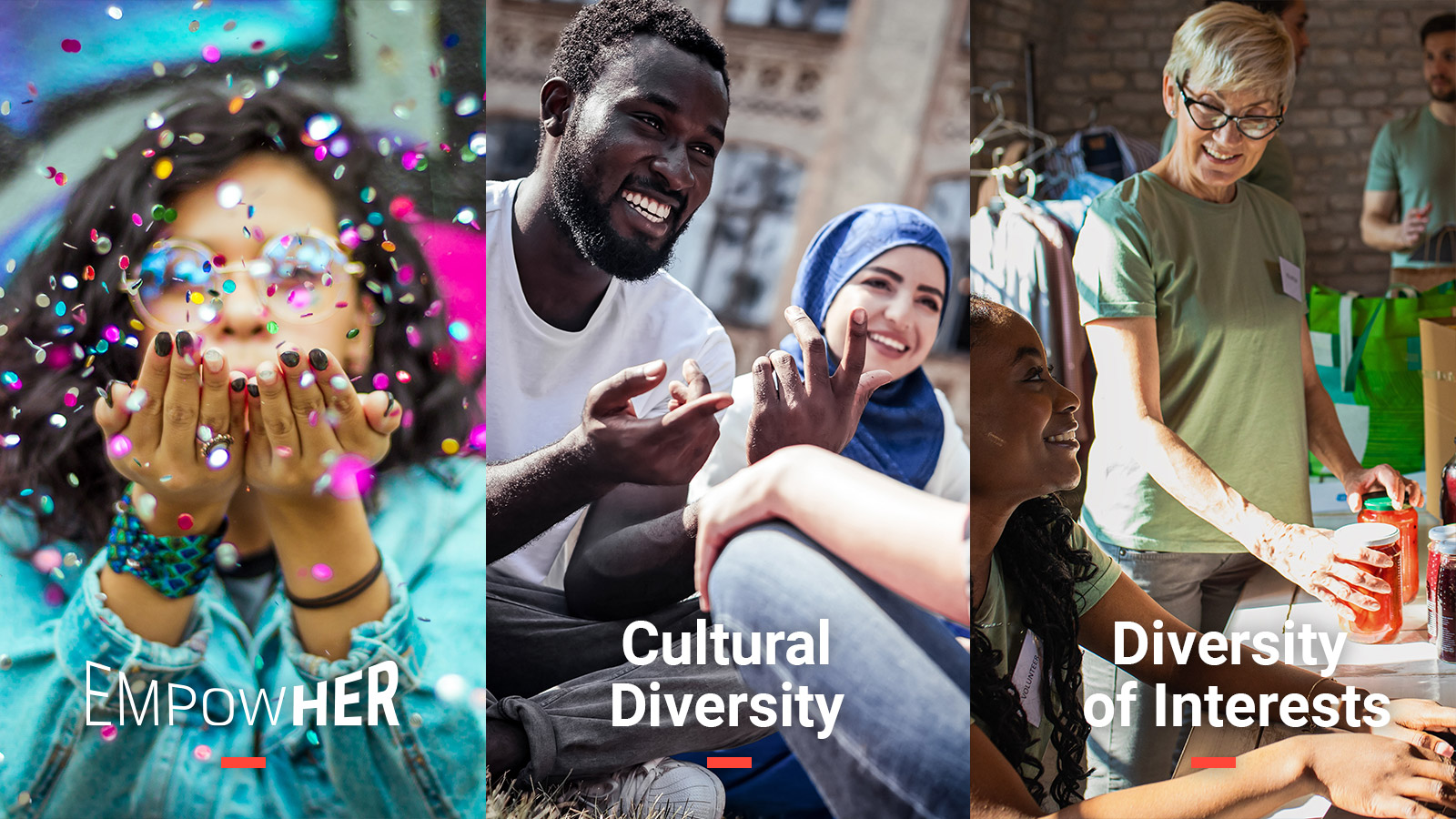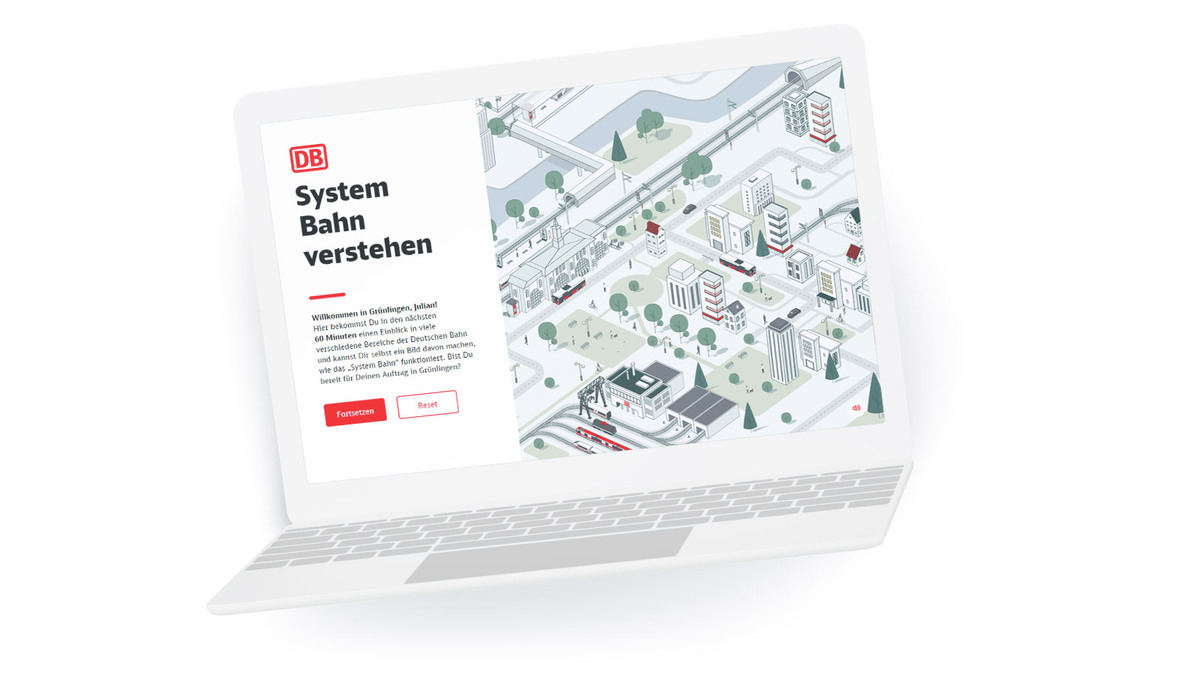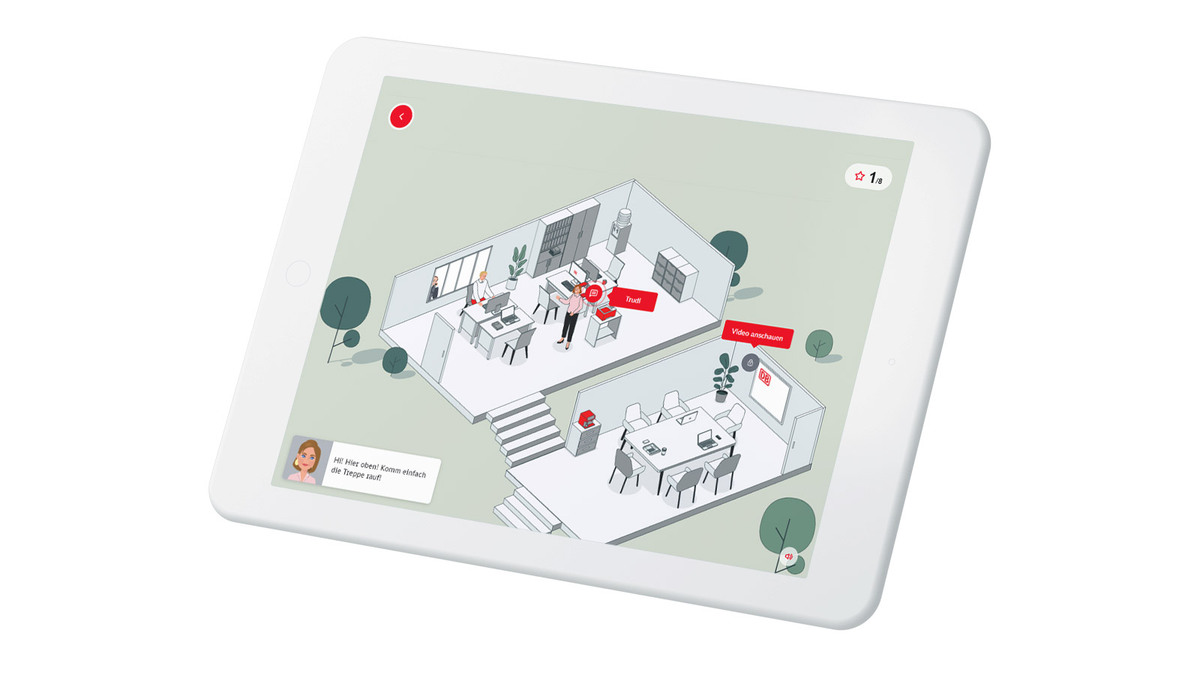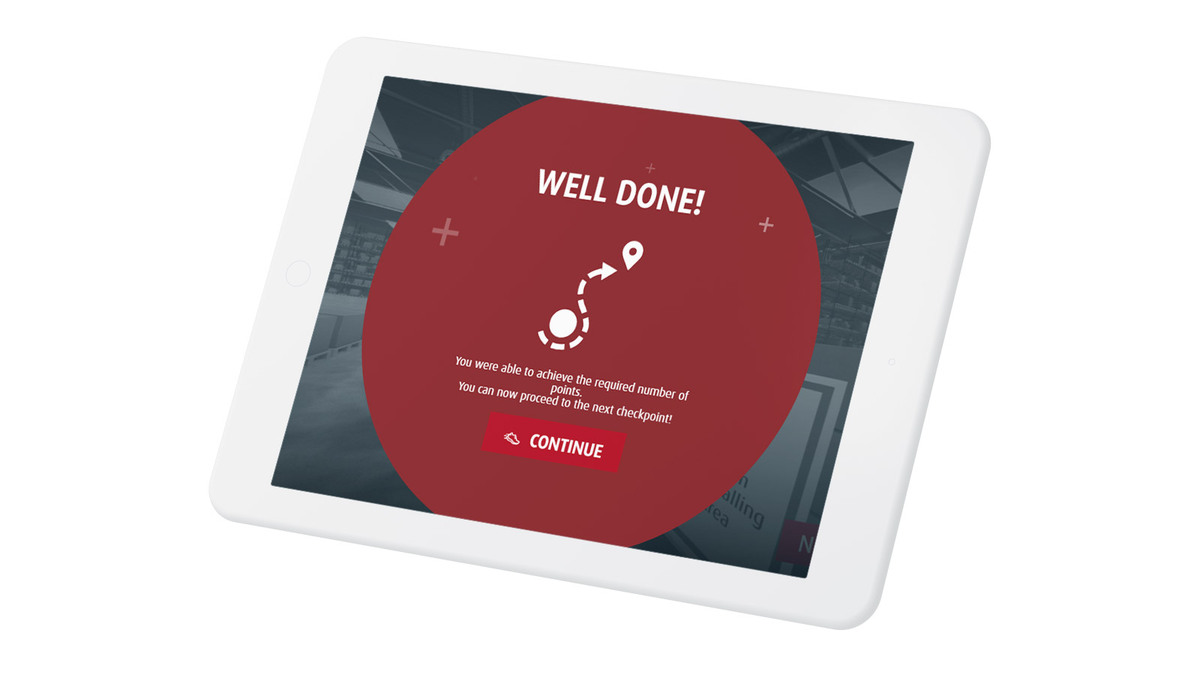
Navigating Change: the Importance of Future Skills
Strategic skills development for companies and individuals in a dynamic working world
What skills does a company need in order to remain successful and improve its ability to respond effectively in a constantly changing world? If we could answer this question with a definitive list, the discussion surrounding “future skills” would be very short.
But, alas, it’s not that simple. There is no universally definitive answer. We can, at most speak only in approximate terms. And therein lies the challenge.
The world of work is in constant flux, shaped by technological advances, changing expectations and ever-new business models. Faced with this highly dynamic and uncertain environment, companies need to get future-ready to ensure they remain successful. And central to this are future skills. These are skills that employees and teams require in order to remain actively in control in a constantly changing world. Our experts advise companies and organisations on how to approach this complex topic.

Uwe Hofschröer, Head of Learning Strategy Consulting at imc
Uwe Hofschröer and his team advise companies at the strategic level on learning objectives, learning formats, and learning content. “There are two layers of uncertainty on this subject,” he says. “Firstly, future skills are, by definition, dynamic. They relate to something that won’t become relevant until some point in the future. And secondly, they describe ‘supra-disciplinary skills’ that don’t relate to any current tasks or challenges affecting employees right now. But that’s not a reason not to engage with the subject.”
Self-directed learning and self-organised learning processes
Companies must take care not to confine their focus on future skills purely to the strategic level. They must follow the matter through to the individual level,
because skills are something developed by and in individual employees. Hence, the focus is on the individual’s ability to successfully navigate change. And that’s something that can be acquired only through overcoming real challenges.
Setting employees “future skills” as a learning task and providing them resources is not enough.
This is especially so since “future skills” transcend subject expertise. They are about enabling employees to navigate new, previously unknown challenges with confidence. They include communication skills, teamwork, critical thinking, and problem-solving skills. They also involve leadership in uncertain situations and the ability to engage successfully with new technologies.
To ensure employees can navigate future challenges in a self-directed manner, the learning process itself should instill self-organised learning as a core value.
Self-organised learning processes do, however, require a clear framework and must be aligned with the company’s strategy, objectives, and challenges. As Hofschröer explains: “In our experience, dealing effectively with the uncertainties surrounding future skills requires an interplay between the ‘company’ level and the ‘individual’ level.” In his view, there are three core aspects to this:

Defining goals and visions based on the company’s own corporate strategy, on market analyses, and on the specific environment in which the company operates. The key is not to treat future skills as a one-off, top-down project but to give employees an active role.

Reflection and operationalisation: Teams and leadership personnel have a key role to play in the development of future skills. Why? Because they are in a position to articulate the challenges in their work clearly and in detail. How? By organising learning processes to deal with their specific challenges. The company can support them with workshops on learning potential, coaching programmes, or training in methodologies like action mapping.

Building up capacity and integrating future skills into learning offerings: A one-off, standardised solution won’t do, because skills are acquired by individuals and are therefore highly dynamic. The company therefore needs to enable skill development in an integrated manner – in various learning environments and at different levels. This allows employees to develop skills in a way that matches their specific needs and learning situations.
Learning strategies and awareness campaigns as key components
The starting point should be a comprehensive awareness campaign. The aim here is to communicate the importance of future skills and strengthen the strategic framework for their development. It’s vital to get the team leaders on board here. It’s important to recruit them as multipliers and give them the tools they need to foster future skills in their teams.
At the learning strategy level, companies can define targeted formats and methods that integrate future skills into existing and new learning programmes. The formats and methods should foster self-organised learning, data literacy, creative problem solving, and social cooperation. This can, for example, be achieved in product training courses and onboarding programmes by using group work and projects.
The results are blended learning scenarios that promote self-directed learning and employee collaboration. This involves providing clear guidelines and structures to increase the likelihood of success.

Having a long-term perspective is key
It’s crucial not to treat future skills as a one-off matter. Future skills are an ongoing process that must be embraced at both the company and the individual level. “Set it up right, and you’ll create a self-perpetuating cycle of learning,” Hofschröer says. Surveys, monitoring, and focus group interviews are the tools of choice here.
Learning analytics also has a lot to offer here. Learning management systems (LMS) are ideal as evaluation tools. They are very effective at pinpointing and closing learning gaps. And they facilitate feedback and control at the overall company level, ensuring that the defined vision is achieved.
Companies that follow this long-term, strategic approach are better equipped to manage the challenges of the constantly changing working world. Future skills are the key to having agency and responding effectively in a volatile, uncertain, complex, and ambiguous world. They are therefore an important focus of skills development for every organisation.

Summary
Companies today are faced with the fundamental question of how to prepare for an unpredictable future. The importance of skills that go beyond mere knowledge is growing. Skills are the sum total of real-world abilities that are acquired by mastering specific challenges. The term “future skills” addresses this by focusing on skills that enable individuals and organisations to deal effectively with change and uncertainty.
This approach is not new. It has its parallel in the long-standing discussion of overarching key competencies – skills instrumental to meeting needs at both the individual and societal level. “Future skills” is a more recent term. It picks up on this idea, focusing on the various requirements arising from current societal and technological changes. In an unpredictable and fast-changing world, the quest for skills that can unlock the future is of the utmost importance.

Employment trends
Employee-led L&D (Learning & Development) can be used to combat the recently identified trend of 'quiet quitting'. Get all the insights here.

Psychological Safety as Prerequisite for Learning Organisations
Psychological safety sounds like a fluffy feel-good topic: all employees should feel safe. But there's more to it than that. Psychological safety is a basic requirement for any organisation wanting to develop positively.

Contact person
I joined the imc newsroom team in 2021. As a journalist my heart beats for content and storytelling.
I’m excited to figure out how e-learing and digitization affect the future of work. My task is to create content to talk about and I’m always looking for trends.
Privately I love to travel and eat Tapas.
Topics: E-Learning Trends, Corporate Social Responsibility, Press and Influencer Relations

corporate learning
10 proven ways to keep corporate learning engaging
Rolling out certain types of learning content can sometimes cause L&D or IT managers to cringe. This is especially likely when technical content focuses on dry subject matter or tick-box compliance exercises that aren't always directly related to the learner's role.

Top 10 tips for HR heads, IT security, and L&D professionals to foster active learning
Technical training topics, such as cybersecurity awareness training or learning a new software system, are often essential for employees to acquire the necessary skills and knowledge to be productive or to comply with legal/regulatory requirements. However, these topics are often considered dry and boring due to complexity, specialised language, or seemingly distant relevance to everyday work life.
The 10 ways to keep corporate learning engaging set out below make the learning process more enjoyable and effective.
1. Relate to real-life scenarios
Learners are more likely to engage with technical topics if they can see the direct relevance to their lives or careers. Present real-life scenarios, case studies, or anecdotes that demonstrate how the technical concepts are applied in practice. This will help learners understand the importance of mastering these topics and make the material more relatable.
2. Break down complex concepts
Technical topics can be intimidating due to their complexity. Break down the concepts into smaller, digestible parts, and provide clear explanations and examples for each. Use analogies, metaphors, or comparisons that learners can easily understand to explain difficult concepts. Additionally, create a logical progression of information, building on what learners have already grasped.
3. Use multimedia resources
Leverage various multimedia resources, such as videos, audio recordings, graphics, and animations, to illustrate technical concepts. These resources can help make the material more engaging and accessible, as well as cater to different learning styles. Additionally, incorporating multimedia resources can reinforce key concepts and provide alternative ways for learners to process information.
4. Encourage active learning
Active learning techniques, such as group discussions, problem-solving exercises, and hands-on activities, can make technical training more engaging. By actively participating in the learning process, learners can better internalise and retain the material. Encourage learners to ask questions, share their perspectives, and collaborate on projects to create a more interactive learning environment.
5. Gamify the learning experience
Gamification can make dry technical training topics more enjoyable and motivating. Introduce game elements, such as point systems, leaderboards, and badges, to create a competitive atmosphere and drive engagement. Additionally, design interactive quizzes, puzzles, or simulations that require learners to apply their knowledge in a fun and challenging way. As an example, we turned one of the driest topics of all - cybersecurity training - into a fun, interactive game - Cyber Crime Time.

In this gamified learning experience, you take the role of a devious hacker. By exploring IT security from the hacker's perspective, learners gain new levels of cybercrime awareness without the process feeling like 'training'.
Try out the game for free to learn about this innovative approach to technical training.
6. Provide immediate feedback
Timely feedback is crucial for learners to understand their progress and identify areas for improvement. Provide immediate feedback during training sessions, either through automated systems or personal interaction. This will help learners adjust their learning strategies and stay motivated.
7. Foster a supportive learning environment
A supportive learning environment can help learners feel comfortable asking questions and discussing technical topics. Encourage open communication and create a culture of mutual respect and understanding. Instructors should be approachable, patient, and willing to provide assistance as needed.
8. Set clear goals and expectations
Learners are more likely to engage with technical training if they understand the goals and expectations. Clearly communicate the learning objectives, expectations, and assessment criteria at the beginning of the training. This will help learners focus on the most important aspects of the material and track their progress.
9. Offer flexibility and customisation
Allow learners to customise their learning experience based on their needs, interests, and learning styles. Offer flexible pacing, optional supplementary materials, and various learning pathways to accommodate individual preferences. This will help learners feel more in control of their learning experience and increase their motivation to engage with the material.
10. Incorporate peer-to-peer knowledge sharing
While some technical training will often need to be formally structured to ensure precision or regulatory compliance, there is often space for informal, peer-to-peer knowledge sharing.
Does your new software system have a 'power user' in the company? Or does one of your team have a way of communicating and sharing knowledge that’s particularly funny or engaging.
Some new e-learning authoring tools, like our own imc Express, are emerging that make it quick and easy to create and share multimedia learning nuggets in as little as 10 minutes. This can enable subject matter experts to become a useful addition to the L&D team - albeit unofficially. It also helps to avoid valuable knowledge and experience to be siloed within departments - or even worse, lost altogether if key personnel were to leave the company.
How to get started
Engaging learners with dry technical training topics may be challenging, but it is achievable if you implement some or all of the above 10 ways to keep corporate learning engaging. By relating the material to real-life scenarios, breaking down complex concepts, using multimedia resources, and fostering active learning, L&D or IT leaders can create a more engaging and effective learning experience for their learners.
With the right approach, even the driest technical topics can become engaging - maybe even fun! 🙂
Want to learn more about tools and strategies to make technical training more engaging and effective? Get in touch - we'd love to hear from you!

Leadership Training: When the Boss Takes the Learner’s Seat
Improving leadership ability through effective training
Our perceptions and expectations of leadership personnel have changed a lot in recent years. Today’s managers are expected to have both subject expertise and good people skills. Subject expertise can be learned, obviously, but what about the people stuff – the soft skills?
Managers are expected to be able to see things from the employee’s perspective and respond appropriately. The requirements go far beyond merely delegating projects and issuing instructions. The usual hard skills need to be tempered with empathy and judgement in dealings with staff. And that’s where our experts can help – by designing leadership training courses.


Kathrin Heidler, Instructional Designer at imc
Kathrin Heidler has a degree in education, with a major in digital learning. Since 2020 she’s been an educational designer at imc, designing digital learning formats, blended learning strategies and web-based training courses. And she has a strong focus on leadership training. “For me, leadership means empathy for staff, backing your team – both internally and externally – and having technical expertise,” she says. “These are all things you can train for – the hard skills, obviously, but the social skills too. What I find exciting is to dive deep into the ‘how’ of that.”
“Leadership training” is not the same thing as “management training”
Heidler explains that at imc, leadership training means focusing on and learning the core competencies of effective leadership. It relates exclusively to non-technical skills, like communication, empathy, organisational and methodological competencies, and other soft skills.
Management training, on the other hand, relates to learning about new products, specific processes or strategies. It’s about acquiring knowledge and technical – or “hard” – skills.
Both types of training can be combined, of course, but they are generally intended for two different target groups:
- Employees new to leadership roles who need to learn the necessary people skills and understand their company’s mission.
- Employees already in leadership roles who need to learn new strategies or acquire new technical knowledge at the managerial level.

However, in both cases, the leaders concerned are generally time poor when it comes to learning. “Leadership personnel are always on a tight schedule, and time is always a big challenge for them,” Heider explains. “That’s why it’s vital to be efficient and find out in advance exactly who needs to do what training. This is especially true for management training courses.
In these cases, I like to work with our KPI-based Readiness Check. It allows me to gauge each learner’s existing knowledge level so that I can suggest appropriate content and learning options. That saves a lot of time and frustration.”
Success hinges on having clear parameters and expectations heading into these courses. “Both parties must have a realistic understanding of the basic requirements and constraints. And by both parties, I mean the company seeking leadership training, and us as their strategic partner,” Heidler explains. “What’s to be learned, and how? Realistically, how much time is available for the leadership training? Only by having clear objectives can we achieve successful training outcomes.”

“Effective course design is about getting from the aspirational to the factual”
Katrin Heidler has already supported numerous customers as a strategic sparring partner for the design of leadership training courses.
“Given all the hype around leadership and management training, I make a point of focusing the client on the basics,” she explains. “So, at the start, we stay very analytical and nail down things like exactly who the target group is. What defines the group? What is the learning objective? What specific actions and behaviours is the course supposed to teach?
“It’s not enough to simply say, I want to make the managers more agile. I have to be able to specify exactly what actions constitute agile behaviour. Breaking it down to specific actions enables the courses we design to achieve the desired outcome of better leadership ability.”
When designing leadership training, start by writing a list of core competencies and mapping those to specific types of action. This will provide clarity around what’s expected of the training because it provides a bridge from aspiration to facts and actions.
Choosing the right learning formats
Modular learning nuggets:
learners can complete a training session in just 10-15 minutes
Performance cards as digital flashcards:
Learning content can be presented in a short and punchy way
Virtual classrooms:
Time is blocked out directly in the learner’s calendar; this format does, however, require a trainer
Hot curriculum picks for leadership training
In closing, we asked Kathrin Heidler to give us her picks for learning objectives for leadership training in 2023:
“Leaders need to be aware that we’re in a time of economic and demographic change. And they need to be confident and sure – not fearful – in dealing with this change. They should continue to work on their own technical skills. Last but not least, they need to see their staff as people, with all the needs that being human entails. That would be my learning recommendation.”


Can Germany afford its current AI scepticism?
Artificial intelligence (AI) is often viewed sceptically in Germany, but often without justification. In this interview with Kristian Schalter, we talk about how future technologies will change our working world.

AI in Corporate Learning
There are many fears about the topic of artificial intelligence (AI). But especially in corporate learning, AI can be a great help.

Contact person
I joined the imc newsroom team in 2021. As a journalist my heart beats for content and storytelling.
I’m excited to figure out how e-learing and digitization affect the future of work. My task is to create content to talk about and I’m always looking for trends.
Privately I love to travel and eat Tapas.
Topics: E-Learning Trends, Corporate Social Responsibility, Press and Influencer Relations

Hype or future: Will ChatGPT revolutionise corporate learning?
AI and chatbots have the potential to transform employee training and development – Our experts check out the possibilities
ChatGPT is a chatbot powered by artificial intelligence (AI). “GPT” stands for “Generative Pretrained Transformer” – meaning the chatbot has been trained up on countless texts. ChatGPT can write content, evaluate compositions, translate, and write screenplays, job applications, emails, entire essays and even song lyrics.
Interacting with ChatGPT is as simple as typing an instruction into its chat window. So that’s what I did:

So far, so good. I probably would have put it differently myself, but it’s certainly not wrong. ChatGPT has many potential applications, that’s for sure. But how exactly might we use it in corporate learning and to create training content? I teamed up with an expert to take a closer look.

Diving right in: Making friends with ChatGPT
Faced with the unknown, most people are initially defensive and sceptical. That’s certainly true with new technology. Twenty years ago, we were up in arms about Google, but now we wonder how we ever lived without it.
All the more reason, then, for Arne Benoist to put ChatGPT through its paces. “I was very keen to try ChatGPT for myself – and I was surprised how well it works,” he says.

Arne Benoist, Instructional Designer at imc
Instructional designers convert material and topics into learning content and didactic concepts. They select the learning formats to match the target group, learning goals and corporate objectives. And finally, they create learning environments to make it all happen.
To test the AI, the instructional designer used an old training project that had already been completed. “The tasks I gave ChatGPT were repeats of ones I’d completed myself when I designed the training.”
Summarising long texts:
ChatGPT does a very good job here. It can trim long, complex texts down to any word count and unpack jargon, producing short, easy-to-understand-prose.
Translating:
Here, ChatGPT is similar to DeepL, except that you can specify style. For instance, you can tell it to translate into simple or age-appropriate English.
Brainstorming:
Here, ChatGPT can come up with good initial ideas that you can build on in the later design process.
Arne Benoist did, of course, encounter a few limitations. “For summaries and translations, we can only use public domain content, as OpenAI is an open, online platform. You should never upload company data or confidential information. Currently that would fall foul of most companies’ data protection and privacy rules.”

But: Can ChatGPT creatively design training content?
Designing modern e-learning content is an intensely creative process. It seems strange to think a hunk of AI might make a good job of it. So, Arne Benoist gave it a try:
“For many of our designs we use stories, complete with scenarios, characters and plots. Hence, I asked ChatGPT to create a scenario for a web-based training course on cybersecurity. Well, the chatbot did pretty well, actually, but after a few repeat requests I kept getting similar scenarios. I’m sure I could have got better drafts if I’d fiddled around a bit more and given more specific instructions. But the first stories were too smooth and lacking in dramatic tension for my liking.”

While ChatGPT is thorough and produces solid texts, it appears to output an average of all the knowledge at its disposal. Consequently, for creative work, we’ll be needing the brains and experience of our human experts for a while yet. (Note from author: Phew!)
Still some way off: ChatGPT integration into training courses
Learning with chatbots and IT-powered applications is already a thing in many areas of corporate learning, including with imc Express. But integration of ChatGPT itself? Arne Benoist thinks that’s still some way off. “In most cases we’re working with highly detailed, specific content. So, to use AI in our training courses, we’d have to build the AI ourselves – so we could control it. I’m referring here mainly to data protection, but also to verifying sources.”
Nevertheless, Arne Benoist will be keeping a very close eye on ChatGPT and similar developments. “I’m very much aware ChatGPT is the start of something big, and it has quickly garnered a lot of fans. But I think we still have a way to go before it will truly revolutionize employee training and development. While I can imagine integrating ChatGPT or similar applications in the future, we’re not quite there yet for the kinds of projects we look after.”

Big things are happening
ChatGPT is certainly not short of ideas on how it can enrich corporate learning:

You never know. As Arne Benoist says: “Perhaps we’ll read this article again in a year’s time and laugh at how it has all turned out differently to how we thought.” OK, it’s a date! Let’s check in again in January 2024 and see how far ChatGPT and AI have come.

Can Germany afford its current AI scepticism?
Artificial intelligence (AI) is often viewed sceptically in Germany, but often without justification. In this interview with Kristian Schalter, we talk about how future technologies will change our working world.

AI in Corporate Learning
There are many fears about the topic of artificial intelligence (AI). But especially in corporate learning, AI can be a great help.

Contact person
I joined the imc newsroom team in 2021. As a journalist my heart beats for content and storytelling.
I’m excited to figure out how e-learing and digitization affect the future of work. My task is to create content to talk about and I’m always looking for trends.
Privately I love to travel and eat Tapas.
Topics: E-Learning Trends, Corporate Social Responsibility, Press and Influencer Relations

Examples of a Good Learning Experience
Here we offer examples of a good learning experience from a handful of our projects.
It’s always a shame when training is rolled out without due consideration for learner engagement. This is one of the reasons that e-learning has a bad reputation - it’s too often seen as a ‘Click next’, box-ticking exercise that employees want to get through ASAP then get on with their day.
High quality, engaging e-learning helps to ensure that learners absorb, retain and implement new knowledge and skills, bringing about long-term behaviour change and improved performance.
Delivering a good learning experience can also help to create a culture of learning where employees then go seeking out personal and professional development opportunities that will benefit the whole organisation.
So on to some examples of where our e-learning solutions, including custom content and learning management systems (LMS), have enabled training to deliver real impact…

Not just good – a Meisterpiece: LMS and blended learning for Jägermeister
Jägermeister has around 1000 direct employees, plus a large network of resellers and external distribution partners around the world, making a large number of people requiring training.
At the same time, a coherent and strong brand image that all employees identify with is a top priority for Jägermeister, so the learner experience was considered crucial.
They decided to use the imc Learning Suite for their training platform because the well thought out extended enterprise scenario, in combination with the clear module structure, convinced them that we were a good fit for their needs.

Following testing and roll-out, users were especially taken with how the e-learning content triggered an emotional response. The consensus among the employees: Once you log in to Meister Academy, the training courses don’t feel like learning.
The direct integration of LinkedIn Learning courses was also received very favourably, as it gives employees an even greater choice of courses.
Philipp Terstesse, Manager Global Trade Marketing at Jägermeister, gave the following summary:
“Our goal was to create a learning experience that takes a new approach and motivates learners. The learner and employee experience were extremely important to us.
We firmly believe that our digital ambitions go a long way towards shaping the future of our brand. We are thrilled to have a strong partner in imc who will stay by our side as we embark on this journey into the future together.”
Read more about our work creating an LMS and blended learning for Jägermeister.
Comprehensive onboarding and learning experience for The Green Climate Fund
Established within the framework of the United Nations Framework Convention on Climate Change (UNFCCC), this organisation based in South Korea was set up to assist developing countries in adaptation and mitigation practices to counter climate change.
At the time of writing, The Green Climate Fund (GSF) had raised $10.8B USD to support 200 projects and avoid 2.1B tonnes of CO2 pollution.
The fund wanted a comprehensive onboarding and training solution providing an understanding of GCF's climate focus, shared values, governance, policies and practices, all underpinned by a learning experience framework and strategy.

We worked closely with GSF to create their Learning Experience Framework - a continuous model of learning and development that embeds opportunities of meaningful experience, exposure and education.
This was followed by 20 hours of Digital Orientation Modules, focusing on four core types of digital learning approaches to meet the diversity of needs we discovered throughout our research:
- Scenario-based training
- Storytelling
- Problem-based learning
- FAQs and resources
As a result of this e-learning, we were able to measure a reduction in human operational and procedural error, while embedding confidence and competence among new employees.
imc and the Green Climate Fund were recognised as Platinum winners in the 2021 LearnX awards. Client feedback was also extremely positive - George Zedginidze, Head of Knowledge and Change Management at the Green Climate Fund said:
“We at the GCF are elated to be partnered with imc! Their professionalism and flexibility has made this project what it is today. We are especially thrilled with the imc team, whose time, effort, and abilities have made this partnership a success.”
Read more about this onboarding and learning experience project for GCF.
Motivation for an unloved topic: compliance training for Audi
Trainees are usually unenthusiastic about the idea of compliance training even before it begins - to say the least. So Audi wanted to create unusual compliance training, delivered in a way where the necessary knowledge is clearly conveyed to them and they have fun along the way.

“Welcome to Fraud City. The city “eats” its residents – skin, hair and all. We hope you’re up to it. Enter at your own risk.”
Not your usual intro to compliance training! This entire web-based training (WBT) course involved motion design and adopted the style of “Sin City”. It takes the brave participant to a corrupt city full of dangers and suspect colleagues – accompanied by Detective Fraudless.
The employee navigates through the training course with the criteria for identifying cases of fraud being revealed along the way. So are behavioural patterns that call for special attention.
Audi demonstrated great courage with this unconventional concept – and reaped the rewards: The elaborate and polarising concept leaves a lasting impression, creating a buzz among almost all employees.
Laura Schumacher of the Audi Compliance Department told us:
“Compliance training is always a tricky subject. For this WBT though, we received very favourable feedback from our employees!”
Read more about this fun and engaging compliance training for Audi.
Want to learn more?
You can see more examples of a good learning experience within the case study section of our website. Can we help you to transform training within your organisation by creating an engaging learner experience?
Contact us here at imc.
![[E-Learning Punk] Exploratory 3D Learning](https://imc.zeitraum.com/wp-content/uploads/2021/02/imc_image_elearningpunk_3Dlearning_hero.jpg)
Exploratory 3D Learning
Not only movies like “Avatar”, but also learning content can benefit from spatially compelling images. We explain the advantages of this professional development trend and present you application scenarios for 3D learning.

Immersive Learning during the Crisis
Immersion is one of the most successful learning methods. Jennifer Fritz, VR expert, points out the potential benefits of using Virtual Reality especially during this unprecedented times.

Using Improvisational Theatre for Corporate Learning
Interview with Marlene Konrad, a consultant and trainer specialising in communication, collaboration and change
The curtain is just about to go up. The actors are calming their nerves as the excitement in the audience builds. Just another “normal” day at the theatre. Except there’s no script: anything goes. This is improvisational theatre, and spontaneity is the name of the game.
Improv actors need to be constantly on their toes, ready to pivot and respond to ever-evolving situations. Working together, they juggle ideas, developing the scene as they go along. If one idea falls flat, they move on to a new one without any break in the flow of action.
The skills used by improv actors seem to align closely with what’s expected of a lot of teams in today’s corporate world. In both cases, it’s about navigating uncertainty, constantly adapting to new challenges, trusting in one’s teammates, and working together spontaneously.
If this is true, then surely it’s not too much of a stretch to use improvisational theatre techniques in corporate learning? To find out how this might work, we spoke to Marlene Konrad, a consultant and trainer specialising in communication, collaboration and change.

Change requires a willingness to learn
“For me, learning and change are two inseparable parts of the same thing,” Marlene Konrad explains. “Change in an organisation can succeed only if all employees learn something new and if they learn how to grow and develop. That’s why learning is such a key part of my work.”
Konrad studied theatre and media studies and English language and literature. She completed her practical training at Commha Consulting, where she continues to work as a consultant and trainer.

Marlene Konrad
In her work, Konrad likes to switch things up and try out-of-the ordinary approaches. She is passionate about improv theatre, for example. “Using improvisational theatre, or at least elements of it, as a training method is nothing new. It’s called applied improvisation, and it’s been around for quite a while. But I’ve developed my own personal approach because I’ve been doing improvisational theatre for a long time and have led several improv groups.” Alongside a whole range of improv-inspired projects, Konrad uses improvisational theatre techniques in two main areas.
Agile teams
The salient point here is that improvisational theatre is a team sport. “Improv theatre teams have many characteristics and skills in common with effective teams in work contexts. Hence, we can adapt a lot of improv techniques for team development and collaboration. Improv teams have to remain unfazed by extreme situations. They need to be able to navigate complete uncertainty, for example. And that’s also something that is expected of agile teams in work contexts.”
Reflection
Another key aspect of improv theatre is that it sheds light on things that would otherwise remain hidden: “Improvisation makes intangible things real. That’s why I like to use it as a tool for reflection. Improvised roleplays bring into the open things that are normally difficult to explore, such as communication, conflict, feelings and interpersonal relationships. This is hugely important in feedback training and leadership seminars, for example.”

New Work – new challenges: Tomorrow’s teams need more certainty
For Marlene Konrad, one of the greatest challenges in organisational transformation processes is to embrace flexible thinking. She explains this in terms of companies weaning themselves off rigid processes and workflows while still ensuring that their employees feel safe and secure. “Perhaps you’ve heard of ‘psychological safety’. This is where I foster in a team a sense of safety that comes from the team itself, from the interrelationships and responsibilities between the members of the team,” Konrad explains. “It’s important that this feeling of safety no longer derives from processes because processes can quickly change. So, as well as being flexible, the team needs to work on relationship building.”
Improving this sense of safety within teams is another area where improv theatre techniques can help. To be able to function as a member of an improv team, you have to be open to what’s going on around you and willing to put yourself out there as a person. “You’re thrown into a situation where you need to swing into action quickly because there’s no time to think about ‘what if’. In that situation, you need to have the confidence that you won’t make a fool of yourself if you react spontaneously. That it’s okay to mess up and fail. The art is to ‘fail well’. And that’s something that can be practised using improvisation methods.”

The “Yes, and...” thinking as an innovation booster
Ever been in a meeting and heard an idea dismissed with “yes, but...”? How might that meeting have gone differently if everyone had said, “yes, and...” and simply taken the idea and run with it?
“Yes, and ....” thinking is a key part of improv theatre, and it’s a highly effective technique in innovation processes, as Konrad knows from personal experience: “By saying ‘yes’, I start by accepting what my conversation partner is saying. I consciously avoid following that with ‘but’ because a ‘but’ can close the door to a lot of potentially good ideas. You need to keep that door open and start out by saying yes to everything. Spontaneous improvisation is a good way of explaining this principle.”
Of course, after all those yeses, the team needs to make an intelligent selection and close the meeting. “That’s another aspect that improvisational theatre is great at teaching,” Konrad explains. “When doing a scene, if you keep bouncing from idea to idea to idea, then sooner or later the audience will get bored. Hence the actors need to focus, build coherence and bring the scene to some kind of logical conclusion. By training in that, too, you can learn how to conduct brainstorming sessions and manage innovation processes successfully using the ‘yes, and...’ principle.”

Improv techniques can also be used in digital learning journeys
While taking an entire improvisational theatre performance digital might be a bit of a challenge, the learning methods involved are actually highly transferable to digital learning journeys. The only prerequisite is that all participants meet in an online session with their cameras and microphones on.
Marlene Konrad has already run numerous remote training courses and speed learning sessions using improv theatre methods. “They work really well online. The improv exercises often give rise to a certain synchronicity, or presence, between the participants that enhances the training. And that’s true online, too.”

Examples of learning with the impro method
- Role reflection
- Feedback training
- Innovation/design sprints
Konrad has now developed her improv training technique to the point where she can hold online sessions with more than 20 learners. “It actually works surprisingly well in large groups. For individual roleplays or improv scenes, you can work really effectively in breakout sessions and then reconvene the whole group to reflect and share the learnings.”
Multi-participant digital sessions can be incorporated alongside web-based training and self-learning phases into most learning journeys. That is why our experts recommend that designers consider all format options when creating digital learning journeys. It’s all about having a mix of formats because different learning formats work best with different types of content and offer different advantages. And now: Curtain up!

The Netflix Factor in Self-Directed Learning
Self-directed learning and Netflix have a few things in common! We find out what, how it can be used in companies and where the limitations lie in corporate learning.

The Power of Emotionally Intelligent Brand Training
Emotionality makes it easier for employees to identify with the brand. This identification has a positive effect on motivation and thus directly on daily work. Emotional brand training also generates brand ambassadors from within the company - both internally and externally.

Contact person
I joined the imc newsroom team in 2021. As a journalist my heart beats for content and storytelling.
I’m excited to figure out how e-learing and digitization affect the future of work. My task is to create content to talk about and I’m always looking for trends.
Privately I love to travel and eat Tapas.
Topics: E-Learning Trends, Corporate Social Responsibility, Press and Influencer Relations

“Off-the-shelf training content is no longer an uncomfortable compromise”
When is a custom training course money well spent? And when does an off-the-shelf training course make sense?
Digital training solutions continue to gain ground. With the objective of placing learners at the core and inspiring them with real learning experiences, decisions have long been based on factors other than just time and cost.
Yet, to design individual learning paths, you don’t necessarily need custom training content. We spoke to two learning experts, who explain the differences between custom and off-the-shelf training content, and describe what content is best suited for a custom or an off-the-shelf training course design.

Custom vs. off-the-shelf training content – the differences
Custom training content – specifically and exclusively designed to meet a company’s e-learning requirements – is generally created from scratch. Its starting point is a specific need or task, for which a special solution is designed, and an entirely new training course is created.
These solutions are a great choice for companies seeking to cover specialised topics, such as training for their own production areas – where it can be safely assumed that no standardised solution suitable for their needs exists.

Custom Content: Jägermeister Meister Academy
Meanwhile, off-the-shelf training content describes training courses or learning content created independently from any specific customer enquiry which can be used by different companies in a generic form. Thus, this content addresses tasks of a general nature rather than a specific issue or need.
Typical topics almost every company needs to deal with would include information security and data protection. These can be perfectly covered with off-the-shelf training courses, as they reflect regulations and laws applicable to all, rather than company-specific issues.
A clear preference for off-the-shelf training content also exists for compliance trainings, given that the fundamental principles are based on the applicable laws. However, if a company wants to convey their corporate policy in their training course, things get trickier. Stephan Härle, Instructional Designer at imc explains: “Off-the-shelf trainings provide information of a general nature: You must be careful with gifts and may have to contact your Compliance department. Meanwhile, custom training content can offer more detail: In our company, gifts worth X or more must be approved by our Compliance department. It is impossible to include this in off-the-shelf training content because guidelines differ in every organisation.”

Standard Content: Cyber Crime Time
“This should really be the first question to ask from a customer perspective – before deciding whether to use off-the-shelf training content or arrange for custom content design,” Philipp Schossau, also Instructional Designer at imc, explains. “Are my training requirements or issues very specific? Or is this type of training utilised by many different people in various sectors?”
How unique is custom training content?
“First of all, we get together with the customer and carry out a major needs assessment,” Stephan Härle says. “If the right conclusions are drawn at this stage, the training can be designed to fit the target group perfectly. But we can only do that with a custom training. Defining the target group very precisely enables us to find the right approach, make the training exciting for a greater number of learners, and increase the completion rate. Custom really means customised for a specific requirement and tailored to the learners’ needs.”
“It’s like buying an outfit,” Philipp Schossau continues: “If you were to attend a gala dinner, it would be rather difficult to find a suitable mass-produced smoking that fits perfectly. However, if I’m only going out for a nice dinner, without it being a special occasion, then I can buy and wear off-the-shelf outfits that I enjoy wearing.”
Still, even the best store-bought suit cannot compete with a tailored fit, and the same applies to e-learning content for certain target groups. “I understand this issue all too well. I have very short arms, and many things will simply not fit straight off-the-shelf,” Schossau jokes.
We raise the bar for off-the-shelf training content
In the past, off-the-shelf content often seemed somewhat stale. That is changing. This past year, imc has been developing and expanding its off-the-shelf content. The specialist department researches relevant topics in its market. Ideally, the solutions are a match for all customers and across countries. But above all, the latest off-the-shelf training courses aim to feel good, cutting edge and highly motivating.

INFO
- At imc, off-the-shelf training content meets the same high requirements for design and user experience as custom training content.
- T off-the-shelf training courses recently designed by imc are fully responsive, and the relevant training courses can be completed from mobile devices.
- Both categories can be integrated into a learning management system (LMS) or be utilised without an LMS.
Stephan Härle: “We want off-the-shelf content to break free from its poor image. While many reasons speak for custom content, off-the-shelf content need not be an uncomfortable compromise. On the contrary, it can be a perfectly suitable and useful solution that is also enjoyable.”
Naturally, resource investments are significantly lower, given that no further input is needed for the content design. Moreover, ready-made training content is available much faster than a custom solution that needs to be designed first. Of course, costs can play a role in this decision, too. Off-the-shelf content is usually cheaper.
But the two categories can also be combined to leverage their strengths, Härle explains: “There really are no limits! With an individual learning journey, off-the-shelf content might, for example, be included as learning nuggets. Our objective is to create off-the-shelf content that feels nothing like off-the-shelf. Cyber Crime Time, the Journey, is a prime example for this.”

Cyber Crime Time
The Grimme Online Award nomination adds to a long line of awards recognising the serious game Cyber Crime Time. With the Cyber Crime Time learning journey, the creators respond to current developments, and offer extensions like the Phishing Detection Booster.
Companies can purchase Cyber Crime Time as off-the-shelf content. A trial version is available for anyone wanting to play the role of a hacker.
The questions companies should be asking themselves, when deciding whether off-the-shelf content could meet their needs:


The Netflix Factor in Self-Directed Learning
Self-directed learning and Netflix have a few things in common! We find out what, how it can be used in companies and where the limitations lie in corporate learning.

The Power of Emotionally Intelligent Brand Training
Emotionality makes it easier for employees to identify with the brand. This identification has a positive effect on motivation and thus directly on daily work. Emotional brand training also generates brand ambassadors from within the company - both internally and externally.

Contact person
I joined the imc newsroom team in 2021. As a journalist my heart beats for content and storytelling.
I’m excited to figure out how e-learing and digitization affect the future of work. My task is to create content to talk about and I’m always looking for trends.
Privately I love to travel and eat Tapas.
Topics: E-Learning Trends, Corporate Social Responsibility, Press and Influencer Relations

The Power of Emotionally Intelligent Brand Training
How brand training can enhance employee brand loyalty
It takes a lot to build a strong brand. You need fresh and appealing brand visuals, a corporate design that’s modern and to the point, and an identity that’s bold and a little out of the ordinary. And, not least, you need employees who are engaged and totally on board.
Your employees influence your brand, both directly and indirectly, and help shape its external impact across all touchpoints, from initial customer contact to the actual product. Ideally, you want each and every employee to be a multiplier, positively representing your brand in dealings with friends and relatives, when out at a restaurant or at a party and, most importantly, on social media.
This all sounds nice, but how to achieve it? The answer is brand training. Many of our customers have been asking us about it, so we’ve decided to take a closer look, using ourselves as guinea pigs. In this article, we describe our own new brand training course, the rules we followed in devising it, and why we believe it is a worthwhile investment.

Rule #1: Brand Engagement + Education = Brandification
When it comes to the values behind a company’s brand, the first step is for everyone in the company to get back to the basics. What are the brand’s origins? What are the principles that underpin it? What is the company’s purpose? By learning about these things, learners become aware that everyone in the company can play a part in realizing the values and goals of their brand. And because brands change over time, the learning needs to be ongoing.
imc is no exception. We have changed a lot over the years – and will continue to do so. As well as relaunching our brand, we want to achieve greater momentum on issues like new work, diversity and inclusion, and our own transformation. Consequently, the objective of our new brand training course is to communicate this culture shift and the underlying values in a way that is readily accessible so that we can instil in our employees a strong emotional attachment to our brand.
Learning objectives set out the areas and levels where change is to happen (understanding, thinking, action, etc), so it is important to define them right at the start of the brand training process.

imc Brand Training
Rule #2: Genuine attachment transforms initial attraction into a full-blown relationship
A company’s fundamental values and culture are reflected in virtually everything it does and therefore need to be understood and actively supported by its employees. New hires, in particular, must be able to rapidly internalise what their new employer’s brand means and stands for. They applied for the job out of an initial attraction to the brand, and it is now up to the company to build that attraction into a genuine relationship.
A successful onboarding journey is vital to this because onboarding is the first step towards brand loyalty. For this reason, companies should proactively offer onboarding experiences that are consistent with and support their brand promises.
That’s why the completed brand training course at imc was specifically developed for our new onboarding journey and designed to fit into our onboarding storytelling. It also works as a stand-alone training course for established imc employees.

imc Brand Training
To ensure that new employees find it easy to get started and engage with our brand training, we have made it an integral part of our onboarding process. We have also incorporated it into our learning management system (LMS). To reach as many learners as possible, brand training must be easy to engage with, not take up too much time, and be accessible from any location and device.
Rule #3: Turn likes into love with emotional branding
Emotional branding is very powerful. It’s the art of connecting with people by tapping into their feelings. But how do you translate this emotional aspect into online training? One very effective approach is to use elements of branding that have high recognition – such as logos, brand visuals or mascots. You can generate very strong emotional appeal by incorporating these elements into storytelling as a way of communicating your brand message.
We (almost) always follow our own advice, so we chose storytelling for our own brand training course. The narrator is our mascot, Max.

Storytelling:
Storytelling is a communication method that uses narratives to convey information. It is widely used in knowledge management, child and adult education, journalism, psychotherapy, marketing, PR and advertising.
Max looks a little like a ghost and emerges from the dot on the “i” of imc. He starts out very pale but gradually takes on more colour as the learner progresses through the course and learns more about the imc brand.

imc Mascot Max
Max features in every module of the imc brand training course. For example, in one module, he reads from a book telling the story of the company’s founder, Professor August-Wilhelm Scheer. As the course progresses, the mascot pops up to provide background on various points or quizzes the learner on content they have just covered.
Rule #4: The right implementation is everything
In our case, the right tool for creating the brand training course was Articulate Rise. It allowed the team to get involved and help shape the course right from the outset. The necessary expertise in didactics and form was provided by our inhouse instructional designer Oliver Steinhilber. “Brand training courses are very much in demand from our customers at the moment,” he says. “Everyone’s looking at learning on topics like onboarding, change and new work, and the people responsible for it in HR, marketing and internal communications want to make sure their learning content is authentic and has emotional appeal.”

The Right Tool:
To be sure you’re using the right tool for creating your training course, it’s best to talk to an instructional designer first. Articulate Rise is a sophisticated software application that has a reasonably steep learning curve. For less experienced users, authoring tools like imc Express provide a quicker and easier way of getting started on generating content.
Why invest in emotionally intelligent brand training?
Simple: because brand training content with emotional appeal makes it easier for employees to identify with the brand. This sense of identification improves employee motivation and therefore has a direct effect on their day-to-day work. By using brand training content that has emotional appeal, a company can also create brand ambassadors from among its own ranks – employees who will champion the company brand to both internal and external audiences.
Deep understanding of shared company values and genuine buy-in to the company culture lead to better communication and collaboration, as imc Director of Brand Strategy Kerstin Steffen explains: “Brand training is effective if afterwards everyone feels confident they have chosen the right employer, and all learners feel positive and excited. Effective brand training turns employees into role models who are happy to be ambassadors for the company spirit and brand message.”


It’s all about Communication & Collaboration
Whether we work from home or from the office, hybrid working and global teams have fundamentally changed the way we work together at imc. So it's high time for us to ensure global communication and collaboration standards so that collaboration continues to work successfully.

This year, the imc Diversity & Inclusion programme has even more to offer
Ilse Henne about role models: "If we feel seen, supported, connected and feel proud of other women in our community, then we can be happier and being happier is the best way starting to learn and develop yourself!"

Contact person
I joined the imc newsroom team in 2021. As a journalist my heart beats for content and storytelling.
I’m excited to figure out how e-learing and digitization affect the future of work. My task is to create content to talk about and I’m always looking for trends.
Privately I love to travel and eat Tapas.
Topics: E-Learning Trends, Corporate Social Responsibility, Press and Influencer Relations

Corporate Learning is a Window into Your Organisation’s D&I Soul
Three golden rules for companies seeking to put diversity on their training agenda
Let’s say a company comes to us for help with incorporating diversity and inclusion (D&I) into the learning experience of its employees. Up until fairly recently, the first question we would ask would be, are you looking for training content that appeals to a diverse target audience, or training content that deals with the subject of diversity?
But things have changed over the past couple of years, as Philipp Schossau, Senior Instructional Designer here at imc, explains: “Making training courses diverse in terms of both content and visual appearance is now a standard requirement, irrespective of the subject matter. Diversity training, on the other hand, has its own special requirements – most notably a clear stance on the part of the client.”
Diversity in e-learning is clearly growing in importance. So, in this article, we have put together a summary of key recommendations for companies seeking to incorporate diversity into their learning experience.

All a matter of perspective? Tips for implementing diversity in training content
Prospective employees want to be able to see what a company’s position on D&I is, and how the company is championing the D&I cause. So, whatever the subject matter, company training courses should be diverse and gender-neutral in design. Here are three golden rules for making training courses diverse and inclusive:
Culturally diverse characters:
Whenever human personas or mentors feature in a training course they should reflect a certain degree of cultural diversity. If there are not enough personas to demonstrate sufficient diversity, then it is possible to use fictional characters – avatars – that have no particular cultural background.

imc Biz Quiz
Diverse gender identities:
Needless to say, learning content should aim to reflect and include all gender identities. It’s not enough to merely employ terms like “male”, “female”, and “gender-diverse”. The aim, rather, should also be to break down conventional gender roles and gender stereotypes. Our learning experts therefore always endeavour to keep their design concepts free of these outdated roles and clichés.

INFO:
We’re currently working on a diversity avatar creator. Before taking part in a training course, each user will be able to build an avatar that looks however they want it to, regardless of cultural background or gender role.
Gender-neutral language:
This often depends on the requirements articulated by the company in question. However, we strongly recommend the consistent use of inclusive language across all training content.

in German you can use "*" to create gender-neutral language

GOOD TO KNOW
Authoring tools like imc Express automatically offer a range of output options and simplify the process of creating diverse and inclusive training content. With imcExpress, this process is controlled in the background via AI.
Attitude is a prerequisite for special diversity trainings
The role that D&I management plays in a company is rooted in the corporate culture. This has a direct impact on a company's learning culture. Those who want to implement special diversity and inclusion training into the learning experience of their employees must have a clear stance on it. For this reason, companies should always be clear about the goal of a training before designing the content.
To sensitise the learning audience to diversity issues and communicate facts about D&I, we recommend scenario-based learning. Scenario-based learning uses real-life examples and situations. The closer the learning scenarios are to real-life situations, the more relatable the taught (behaviour) rules will be for the learners. Sensitisation can be further improved by using diverse personas to make learners aware of different or new perspectives.
Ready when you are
Things are changing, and organisations are already taking steps to make their training courses more diverse and to raise awareness of D&I. But many companies are still holding back for fear of doing something wrong. That’s why it’s critical to support D&I with effective corporate communication and drive genuine cultural change. In other words, when it comes to D&I, companies need to be bold and have courage of their convictions.

“The more global the company, the more likely that it’s already sensitised to diversity issues and will take the initiative and articulate diversity requirements for our projects,” said imc project management officer Kenneth Littlepage, Project Management Officer Business Consulting at imc in a previous interview on D&I. “Locally focused companies, on the other hand, tend not to be so sensitised, so it’s up to us to ask questions.”
However a company might choose to approach it, diversity is a topic that’s here to stay, especially for today’s younger generation. Warm fuzzy words in the corporate vision statement are all well and good, but they won’t carry much weight if the company is a monoculture of white men in suits or hides behind disclaimers to the effect that “the use of he and his is solely for ease of reading and refers to all genders equally”. If you want diverse people in your company, you actually have to make them feel included.

Rapid Content Development
We want things now: fast food, coffee to go, messenger services, online shopping … we no longer have time. Companies have also clocked onto this trend, and want to stay up to date with their training courses.

Gamification takes corporate learning to a new level
The fact that Game Based Learning works as a motivational booster for e-learning is already rooted in childhood. We have summarized the most common types of games and practical examples for you.

Contact person
I joined the imc newsroom team in 2021. As a journalist my heart beats for content and storytelling.
I’m excited to figure out how e-learing and digitization affect the future of work. My task is to create content to talk about and I’m always looking for trends.
Privately I love to travel and eat Tapas.
Topics: E-Learning Trends, Corporate Social Responsibility, Press and Influencer Relations

Tips for Using 2D Maps in e-learning
The many advantages of putting learning content into a map structure
Learning content should be inspiring, if not utterly captivating. Ideally, it should be branded and look cool. And it needs to be engaging for the video gamer generation, without alienating more conventional learners. That’s a lot of boxes for modern learning experiences to tick.
Consequently, many companies and organisations are turning to map-based training. Even so, it’s a fairly new area, and the e-learning applications of maps may not be immediately obvious, despite the ubiquity of Google Maps.
That’s why we have put together this article. It explains the difference between 2D and 3D maps and illustrates the structure and advantages of 2D map-based training.

Differences between 2D and 3D maps
Arguably the most important difference between 2D and 3D maps is the browser performance required. 3D maps are rendered live in the browser, so they require more computing power and a very stable network or internet connection. The upside is that 3D maps allow dynamic perspectives: users can switch perspectives within the map.
A 2D map does not allow dynamic perspectives, but the viewer can create the impression of changing perspective by moving relative to the map. This 2D principle is employed in many strategy games, for example. The map is based on images in which it is not possible to change perspectives. The advantage is that fairly large story/learning worlds can be shown without requiring a lot of browser performance.

2D animation
2D does not necessarily mean static. Within a 2D world, it is possible to have individual elements that are animated and dynamic. This is called 2D animation, and it lends life and vibrancy to 2D maps. It is even possible to integrate 3D graphics into 2D maps.
The introduction: arriving on the map
As with most learning experiences, it’s a good idea to start with an introduction. The introduction can appear or pop up on the map in the form of a chat window or a specially created page that briefly outlines the storyline and subject matter of the training session. It is advantageous here to explicitly tell the learner what the training task will involve, and what their objectives are. The benefit of showing an introduction directly on the map at the outset is that the learner does not need to leave the learning world and therefore does not lose focus.

2D Map Training Deutsche Bahn
The main narrative: read the map
It is vital that the main part of the session is self-explanatory. This means the map must be intuitive to use. A certain degree of in-map guidance can be achieved by unlocking individual tasks step by step. That way, learners intuitively know the correct task order, without having to be explicitly told. Crucially, this approach allows learners to discover the learning content for themselves, i.e., exploratively. The navigation leads via the 2D map to various locations that the learner can ‘visit’. An example would be where the map shows a building that the learner can click on and enter in order to progress to the next task or access a learning nugget.

2D Map-Training Deutsche Bahn
Interstitial and achievement screens can be used to lend further structure to the main narrative by appearing as pop-ups overlaying the map. They can provide orientation by showing learners their next tasks, highlighting their progress, or making them aware of further options. The whole learning experience can be made even clearer by adding jump labels to individual locations on the map. These can be used to help the learner navigate from tasks to their associated learning content.
GOOD TO KNOW
Learners should not need to leave the map (the learning world) at any point. Everything they need in order to achieve their objectives should be contained within the map. This can be achieved, for example, by using chat windows that open directly on the map, or by showing learning nuggets, content items and hints as overlays on the map.
The conclusion: leave the map
In 2D maps, just as in other learning settings, it is important to clearly mark the conclusion of learning units and tasks so that learners know they have successfully completed the section in question or indeed the entire training session. There are many different ways of doing this. The key is to ensure the method chosen fits with the training session’s overall storyline. For example, you can use a list of checkpoints which is then displayed at the end with all tasks checked off. Or you can show a notification in the chat window.

Success message at the end of a training session
Questions?
Can a map-based training session also be short?
To retain the map’s explorative dimension while at the same time creating a training session that can be completed within a short space of time, you can reduce the amount of learning content, streamline the user experience, or confine exploration strictly to key locations on the map. The main thing is to maintain excitement while keeping the learning purposeful.
How gamified can a map-based training session be?
The primary focus must be on the learner experience, so the map should not contain any unnecessary actions or locations.
Surely map-based training sessions are very labour-intensive to produce?
Not necessarily. The total overhead can actually be relatively low, as the world created by a 2D map makes a relatively large contribution to creating an exciting learning experience. It is possible to reduce the design overhead that goes into learning nuggets/subpages by integrating them into a 2D map.
But isn’t that really expensive?
The 2D map format does not necessarily require more design work by our experts, so it is a very good alternative to 3D maps, even for limited budgets.
What are the other advantages over 3D maps?
Good performance, low overhead, faster page loading.

Rapid Content Development
We want things now: fast food, coffee to go, messenger services, online shopping … we no longer have time. Companies have also clocked onto this trend, and want to stay up to date with their training courses.

Gamification takes corporate learning to a new level
The fact that Game Based Learning works as a motivational booster for e-learning is already rooted in childhood. We have summarized the most common types of games and practical examples for you.

Contact person
I joined the imc newsroom team in 2021. As a journalist my heart beats for content and storytelling.
I’m excited to figure out how e-learing and digitization affect the future of work. My task is to create content to talk about and I’m always looking for trends.
Privately I love to travel and eat Tapas.
Topics: E-Learning Trends, Corporate Social Responsibility, Press and Influencer Relations

